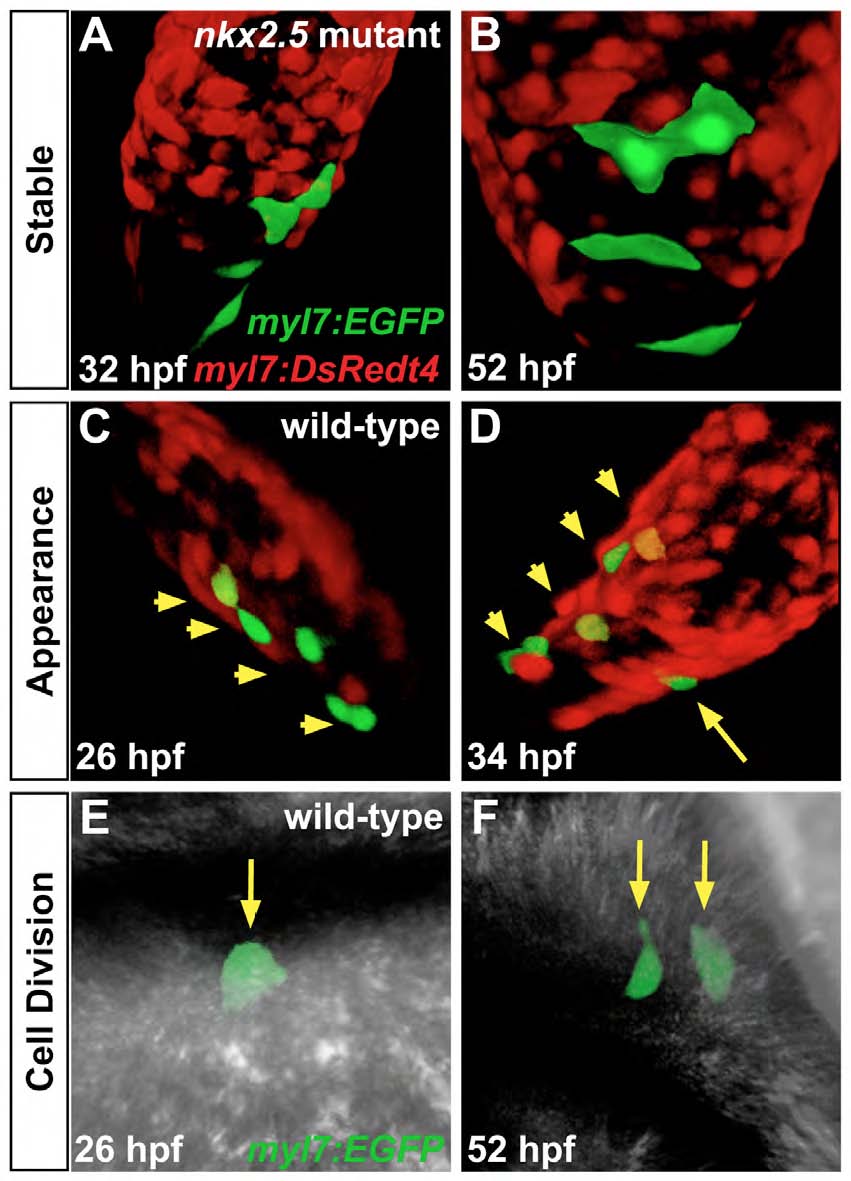Fig. S6 Mosaic labeling tracks cardiomyocyte behavior. Confocal projections of mosaic hearts in live zebrafish embryos. Mosaic labeling was performed by injecting Tg(myl7:EGFP) plasmid into nkx2.5 mutant embryos and their wild-type siblings, both of which carried Tg(myl7:DsRedt4). Embryos with 2-6 GFPpositive cells were followed from 26 to 52 hpf, allowing for detailed analysis of cell behaviors, including division, appearance, and disappearance of cardiomyocytes. (A-F) Representative examples of observed cell behavior scenarios. The observed frequency of occurrence of each scenario in wild-type and nkx2.5 mutant embryos is provided in Table S1. (A,B) Most cells remained stable during the tracking period; as shown in this example, 4 GFP-positive cells in the atrium of a nkx2.5 mutant heart exhibit stable morphology and orientation. (C,D) In some embryos, new GFP-positive cells appeared during the tracking period; in this example, a new GFP-positive cell (yellow arrow in D) appears in a wild-type atrium. Given the distance between the new GFPpositive cardiomyocyte and the 4 originally labeled cells (yellow arrowheads in C and D), the new cell is not likely to be the product of cell division. Instead, newly appearing cells most likely reflect delayed initiation of myl7 expression in late-differentiating, SHFderived cardiomyocytes (de Pater et al., 2009; Hami et al., 2011; Lazic and Scott, 2011; Zhou et al., 2011). (E,F) Cell division was occasionally observed; in this example, a single cardiomyocyte (yellow arrow in E) in a wild-type embryo gives rise to two daughter cells (yellow arrows in F).
Image
Figure Caption
Acknowledgments
This image is the copyrighted work of the attributed author or publisher, and
ZFIN has permission only to display this image to its users.
Additional permissions should be obtained from the applicable author or publisher of the image.
Full text @ Development

